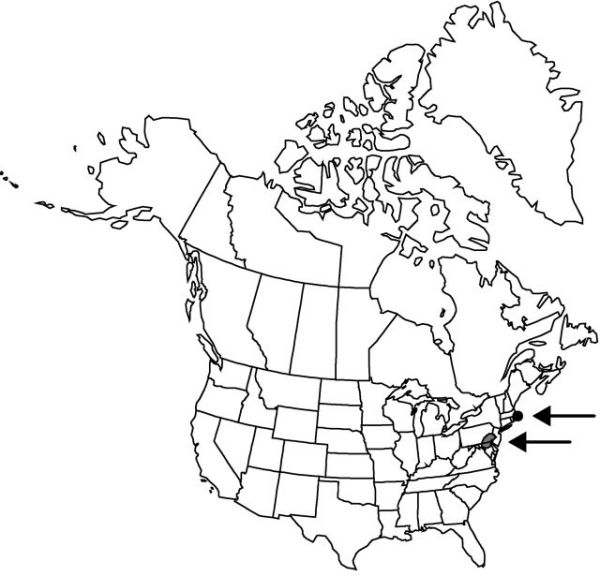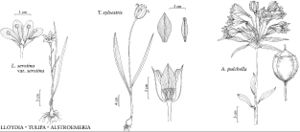Tulipa sylvestris
Sp. Pl. 1: 305. 1753.
Plants (10–)30–45 cm; bulbs often stoloniferous, ovoid to obovate, 1.8–4(–5) × 1–2.5 cm; tunics brownish black, papery, apex with rusty, straight hairs adaxially. Leaves 2–3(–4), widely spaced, more or less declinate, channeled; blade dark green, linear to linear-lanceolate, keeled, glabrous; proximal cauline blade 25–35 × 1–1.5(–2) cm. Flowers 1(–2), nodding in bud; tepals 6(–8), golden yellow, midrib abaxially tinged with green; outer tepals narrowly elliptical to subrhombic, 30–40(–65) × 8–15(–25) mm, apex acuminate; inner tepals elliptic-oblanceolate, 30–40(–60) × 15–20(–25) mm, apex shortly acuminate; filaments flat, 8–14 mm, pubescent; anthers orange, 4–9 mm; ovary bright green, 10–12 mm. Capsules 15–30 × 14–16 mm. 2n = 36.
Phenology: Flowering late spring.
Habitat: Roadsides, fields, waste places
Elevation: 0–200 m
Distribution

Introduced; Md., Mass., Pa., Europe, n Africa, naturalized c, sw Asia, Siberia.
Discussion
The exact native range of Tulipa sylvestris in the Old World is unknown. Stoloniferous, offset droppers account for much of the vegetative spread of this triploid species.
Selected References
None.
